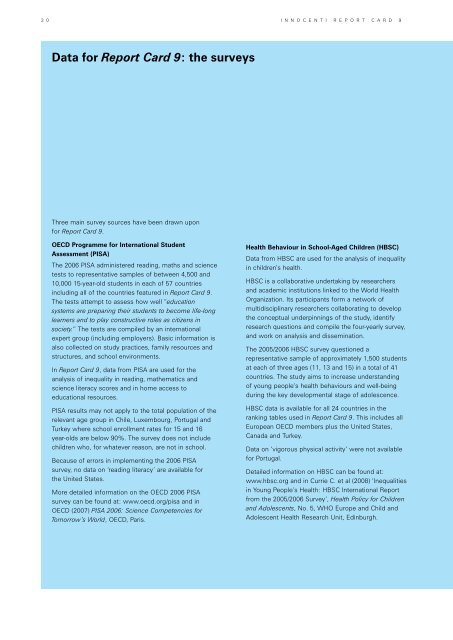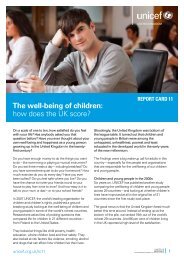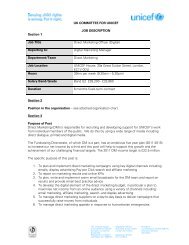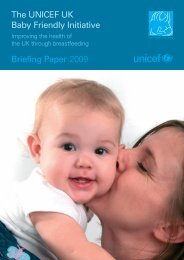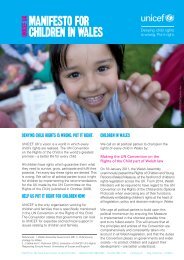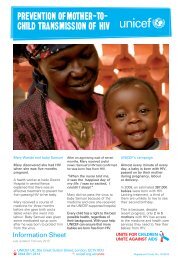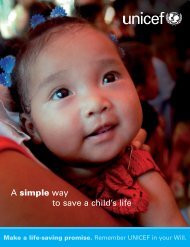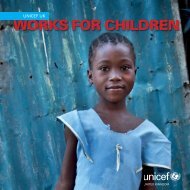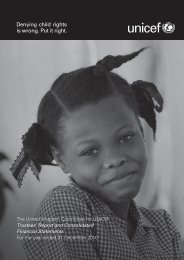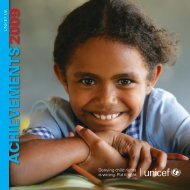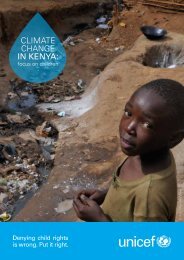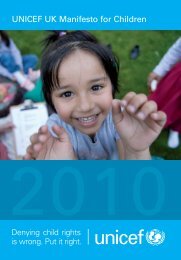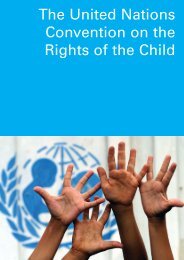The children left behind - Innocenti Research Centre
The children left behind - Innocenti Research Centre
The children left behind - Innocenti Research Centre
You also want an ePaper? Increase the reach of your titles
YUMPU automatically turns print PDFs into web optimized ePapers that Google loves.
3 0 I n n o c e n t i R e p o r t C a r d 9<br />
Data for Report Card 9: the surveys<br />
Three main survey sources have been drawn upon<br />
for Report Card 9.<br />
OECD Programme for International Student<br />
Assessment (PISA)<br />
<strong>The</strong> 2006 PISA administered reading, maths and science<br />
tests to representative samples of between 4,500 and<br />
10,000 15-year-old students in each of 57 countries<br />
including all of the countries featured in Report Card 9.<br />
<strong>The</strong> tests attempt to assess how well “education<br />
systems are preparing their students to become life-long<br />
learners and to play constructive roles as citizens in<br />
society.” <strong>The</strong> tests are compiled by an international<br />
expert group (including employers). Basic information is<br />
also collected on study practices, family resources and<br />
structures, and school environments.<br />
In Report Card 9, data from PISA are used for the<br />
analysis of inequality in reading, mathematics and<br />
science literacy scores and in home access to<br />
educational resources.<br />
PISA results may not apply to the total population of the<br />
relevant age group in Chile, Luxembourg, Portugal and<br />
Turkey where school enrollment rates for 15 and 16<br />
year-olds are below 90%. <strong>The</strong> survey does not include<br />
<strong>children</strong> who, for whatever reason, are not in school.<br />
Because of errors in implementing the 2006 PISA<br />
survey, no data on ‘reading literacy’ are available for<br />
the United States.<br />
More detailed information on the OECD 2006 PISA<br />
survey can be found at: www.oecd.org/pisa and in<br />
OECD (2007) PISA 2006: Science Competencies for<br />
Tomorrow’s World, OECD, Paris.<br />
Health Behaviour in School-Aged Children (HBSC)<br />
Data from HBSC are used for the analysis of inequality<br />
in <strong>children</strong>’s health.<br />
HBSC is a collaborative undertaking by researchers<br />
and academic institutions linked to the World Health<br />
Organization. Its participants form a network of<br />
multidisciplinary researchers collaborating to develop<br />
the conceptual underpinnings of the study, identify<br />
research questions and compile the four-yearly survey,<br />
and work on analysis and dissemination.<br />
<strong>The</strong> 2005/2006 HBSC survey questioned a<br />
representative sample of approximately 1,500 students<br />
at each of three ages (11, 13 and 15) in a total of 41<br />
countries. <strong>The</strong> study aims to increase understanding<br />
of young people‘s health behaviours and well-being<br />
during the key developmental stage of adolescence.<br />
HBSC data is available for all 24 countries in the<br />
ranking tables used in Report Card 9. This includes all<br />
European OECD members plus the United States,<br />
Canada and Turkey.<br />
Data on ‘vigorous physical activity’ were not available<br />
for Portugal.<br />
Detailed information on HBSC can be found at:<br />
www.hbsc.org and in Currie C. et al (2008) ‘Inequalities<br />
in Young People’s Health: HBSC International Report<br />
from the 2005/2006 Survey’, Health Policy for Children<br />
and Adolescents, No. 5, WHO Europe and Child and<br />
Adolescent Health <strong>Research</strong> Unit, Edinburgh.


